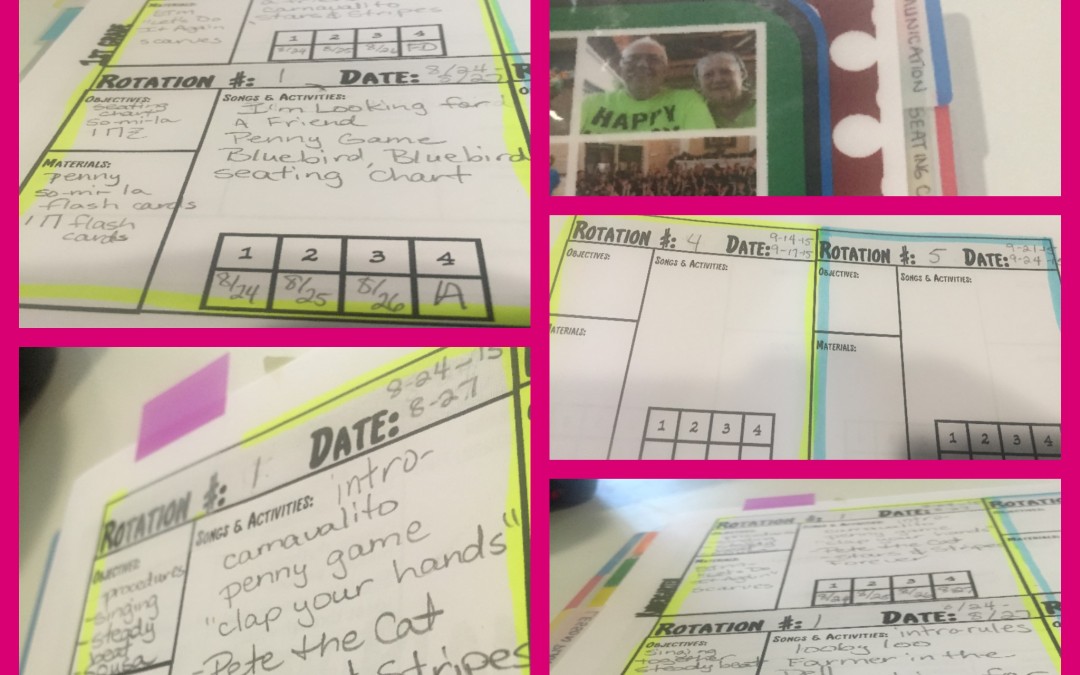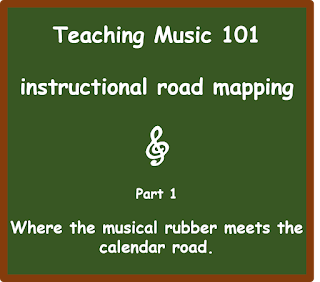Congratulations!
You’ve got your first job as a music teacher at an elementary school! Now what?
It’s July, so that means that in about two breathes you will be standing in front of your very first set of students. Your first year of teaching will be a wild and exciting ride. However, if you choose to take the time to road map, I can’t guarantee that you will end up exactly where you plan, but at least you will have a chosen destination.
What is an instructional road map?
- A road map is a tool that lots of teachers use to keep the on track so that when they sit down to write lesson plans they don’t forget where they are in the curriculum.
- A road map is a document you will look at periodically and adjust often. Think of it as a sort of instructional grocery list of things that you want to remember to include in your time with students.
- A road map is not a lesson plan. Besides the fact that road maps aren’t very detailed, many school district have an online lesson plan tool where teachers are expected to write and share their lesson plans. Lesson plans and grade books are legal documents that are kept by your district and can be audited for up to 5 years. Road maps work as a sort of draft for your lesson plans.
- A road map is not set in concrete. Instructional road maps, particularly in music are heavily influenced by existing calendars, performance schedules that you develop with your principal, and unforeseen changes like fire drills and author visits. With that in mind, plan to create your road map with some wiggle room to allow for interruptions, reteaching and reviews.
Why should I create an instructional road map?
- You should do your best to road map because as a new teacher you may find it difficult to come up with ideas. There is nothing worse than trying to come up with last minute ideas when you don’t have a deep reservoir of experience and materials to draw from. Road mapping will help you set aside some time to get ahead of the rush and allow you to be thoughtfully creative rather than perpetually panicked. Road maps are organized places to keep your ideas. When you have one, put it in your road map.
- You should become a “mapper” because as a newbie you may find that you forget what comes next. If you have your preferred rhythm teaching sequence included in your road map then you won’t accidentally miss dotted half notes.
- You should road map so that you don’t become a rabbit chaser. Time is precious and the opportunity to do your best first teach is limited. Don’t waste them by chasing rabbits. It may be tempting but trust me, your 5th graders don’t need to become a Sondheim experts…… A taste of Sondheim that fits into the curriculum well and that is appropriate? Perhaps… but watching “Into the Woods” with 5th grade because you’ve run out of ideas in May would be questionable and definitely a rabbit….
- When used properly, you can adjust your road map to fit the outcomes of your instruction. It’s a great place to keep track of how your lessons actually went. Where your students able to demonstrate their knowledge? What went really well in that lesson? What do you want to remember to do differently next year? Who missed the lesson? When will I fit that lesson in with my Day 4 class?
When possible I also suggest planning with a buddy. An experienced music teacher can save you hours. However, if you are a music teacher who is on your own don’t be afraid…. You can do this!
You will need:…
- a school calendar – If you are new, your principal or team leader may already have performance dates set for you, If your new school is waiting on your input, creating a road map will be invaluable tool as you form your own opinion about what you would like to do.
- instructional schedule – How many times do you see your students within a given week? If you aren’t sure, your team leader or principal may be able to provide this information. Your instructional schedule more than anything else will inform the pace of your road map.
- national or state music standards – As a new graduate, these may be more familiar for you than anything your district may provide, so this document is especially vital if you don’t have any curriculum from your district.
- scope and sequence, – Most districts have developed their own based on the state or national standards. The most recent versions often exist on your district server which you will eventually have access to even if you don’t yet…. However, if you have access to your classroom, there is probably an older version on the top shelf of the old musty closet in the corner. It might not be up to date, but at the core, the changes are not THAT huge and there may be enough there to at least get you started… Once you get your hands onto the current version you can easily update and I’m certain you won’t be far off.
- a pencil with a big eraser
- resources – blogs, teachers editions, music teacher friends, Youtube, class notes, Pinterest, Orff and Kodaly goodies that you made in college.
- Someplace to write – a spiral notebook will do, but you are welcome to use one of the forms HERE.
You can also download the road mapping templates HERE.
These templates can also be used in conjunction with the melodysoup.com music planner which can be found and downloaded for free HERE.


